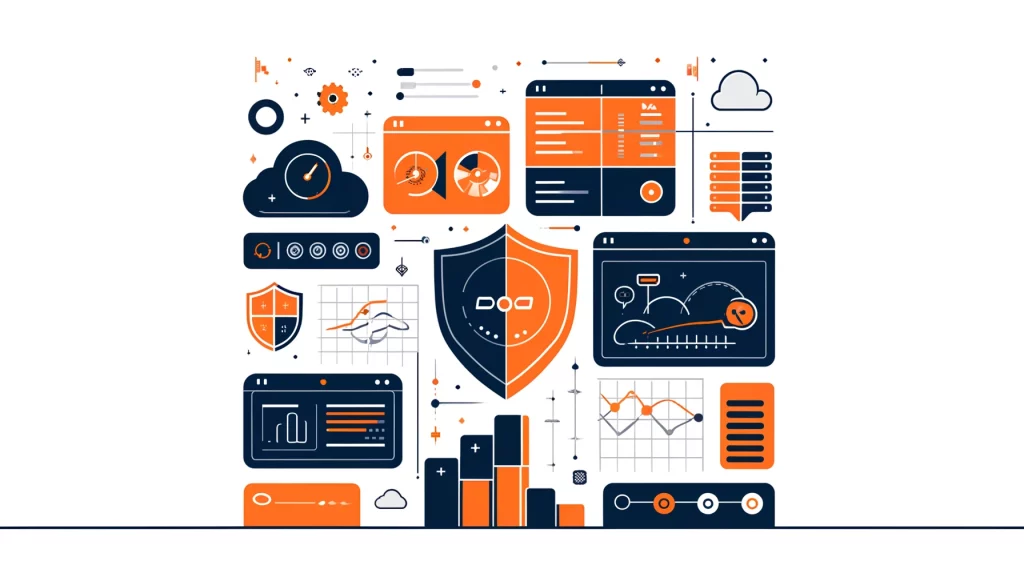
DAM Tools

Introduction
In today’s data-driven world, organizations rely heavily on databases to store and manage their critical business information. Ensuring the security, integrity and proper use of this data is paramount. This is where Database Activity Monitoring (DAM) tools come in.
DAM tools help organizations watch databases live to find and fix security threats, misuse, and performance problems. Now, let’s examine what database activity monitoring involves and the important features to consider in DAM tools.
What is Database Activity Monitoring?
Database Activity Monitoring refers to the process of observing, identifying, and reporting on database activities as they occur. Digital Asset Management (DAM) tools monitor and evaluate database activities in real-time.
This happens regardless of the database management system’s own auditing and logging features. By operating outside the DBMS, DAM tools provide an unbiased and tamper-proof record of database activity.
The scope of modern database activity monitoring extends beyond just tracking user actions. Advanced DAM tools have the ability to find and categorize sensitive data. They can also check for database weaknesses and track activity in applications. Additionally, they can stop unauthorized access and work with identity and risk management systems.
This comprehensive approach provides organizations with deep visibility into database usage and security posture.
Key Capabilities of DAM Tools
To effectively monitor database activity, DAM tools should possess several core capabilities:
- DAM tools must track and save all database actions, such as queries, as they happen without causing delays in the database. This includes monitoring SELECT, DML, DDL, and DCL statements across multiple DBMSs while normalizing the differences in SQL dialects.
- DAM tools protect audit data by storing it securely outside the monitored database to ensure its integrity. This prevents database administrators from tampering with or manipulating the audit logs.
- Comprehensive Activity Coverage
- DAM tools should provide 360-degree visibility into database activity, including actions performed by privileged users such as administrators. Monitoring should extend to activities originating from both internal and external sources.
- Heterogeneous Database Support Organizations often use multiple database platforms. DAM utilities compile information from multiple DBMSs. They connect this data to provide a complete picture of database activity within the company.
- Policy Enforcement and Alerting DAM tools allow organizations to define and enforce security policies. For instance, making sure that service accounts only use the database from approved IP addresses and run limited queries. Violations of these policies trigger real-time alerts, enabling prompt investigation and response.
- Separation of Duties By independently monitoring and logging database administrator activities, DAM tools help enforce separation of duties. This is crucial for preventing insider threats and maintaining the integrity of the monitoring process itself.
Common Attributes to Monitor
To gain actionable insights into database usage and security, DAM tools collect and analyze a wide range of attributes. Some common ones include:
- CPU and memory utilization
- Connection statistics
- Buffer cache details
- Query performance metrics
- Resource pool usage
- Active user sessions
- Deadlock occurrences
- System and user errors
By visualizing these metrics on custom dashboards, database administrators can quickly assess the health and performance of their databases. They can identify bottlenecks, tune queries, and detect anomalous behavior before it impacts end-users.
Example Scenario
To illustrate the value of DAM tools, let’s consider an example. Suppose an e-commerce company uses a DAM tool to monitor their customer database. The tool is set up to alert on any SELECT queries that retrieve more than 1000 credit card numbers.
The DAM tool alerted us about a service account running a strange query from an unfamiliar IP address. The query retrieved 10,000 credit card numbers. The security team discovered that someone stole the service account credentials and used them to access sensitive customer data.
The company learned about the breach quickly. They used the DAM tool’s real-time alerts and detailed audit trail to respond. They contained the incident, notified affected customers, and reviewed their access controls to prevent future attacks.
Implementing DAM Tools
To deploy DAM tools effectively, organizations should follow these best practices:
- Identify Critical Databases
- Focus monitoring efforts on databases that store sensitive, regulated, or business-critical data. Not all databases require the same level of scrutiny.
- Define Security Policies Establish clear policies governing database access, acceptable use, and escalation procedures. Use the DAM tool to codify and enforce these policies.
- Set the right alert thresholds to find real threats without getting too many false alarms. Continuously fine-tune these thresholds based on operational experience.
- Connect the DAM tool with other security systems like SIEM, identity management, and incident response platforms. This enables centralized visibility and coordinated response to database security events.
- Regularly Review Audit Logs Periodically review the captured audit logs to identify trends, anomalies, and areas for improvement. Conducting regular security assessments helps validate the effectiveness of the DAM tool and associated controls.
A Comprehensive DAM Solution For organizations seeking a robust and user-friendly DAM solution, DataSunrise is a compelling option. DataSunrise offers a suite of tools for database security, masking, and compliance. With support for diverse database platforms and deployment models, DataSunrise provides flexibility without compromising on functionality.
DataSunrise’s DAM capabilities include real-time activity monitoring, customizable security policies, and granular auditing. It can automatically discover sensitive data, assess vulnerabilities, and integrate with leading SIEM and identity management systems. DataSunrise also offers high availability configurations to ensure continuous monitoring even if component failures occur.
To learn more about how DataSunrise can help secure your databases, schedule an online demo.
Conclusion
In an era of ever-growing data volumes and escalating cyber threats, database activity monitoring is no longer optional. DAM tools provide the visibility and control organizations need to safeguard their most valuable assets – their data. By knowing how to use DAM effectively, organizations can choose the right tools to improve their database security.
Choose DataSunrise or other tools to monitor database activity proactively. Staying on top of what’s happening in your databases is important. Using the correct DAM tools helps you find and fix database security problems quickly. This reduces risk and ensures that your important applications are always accessible.
